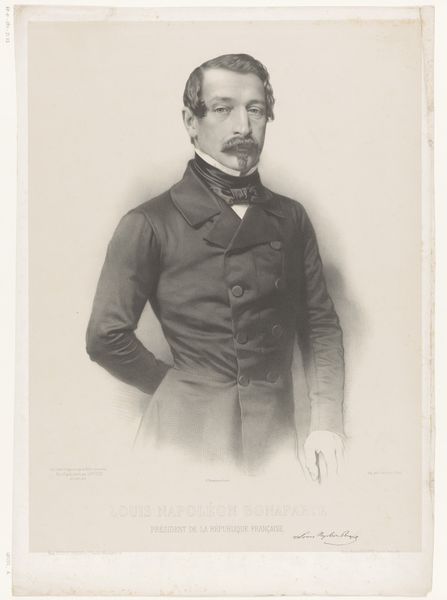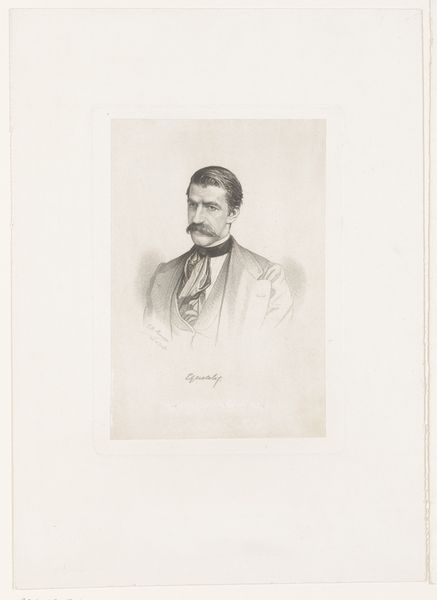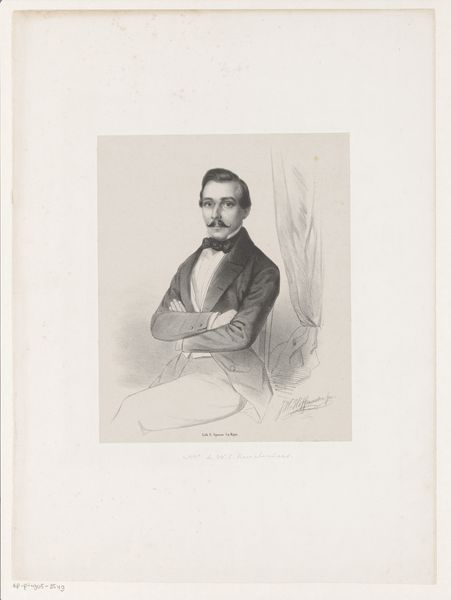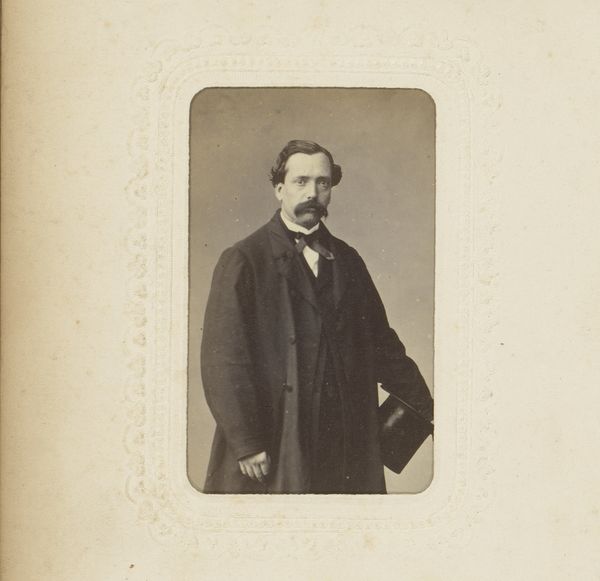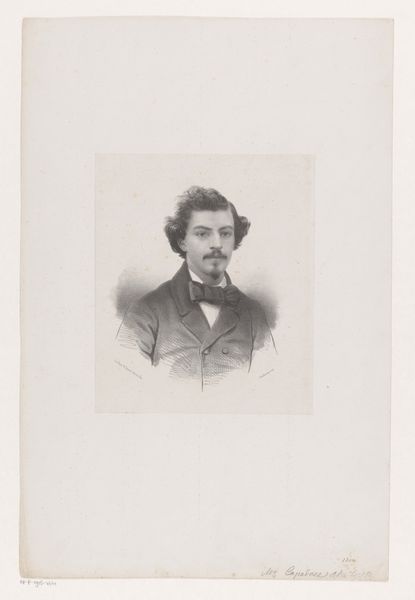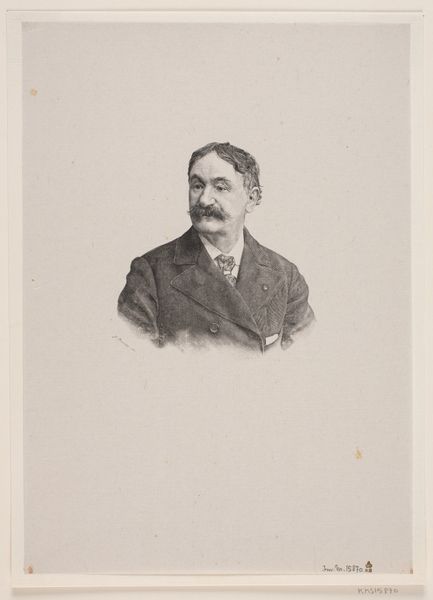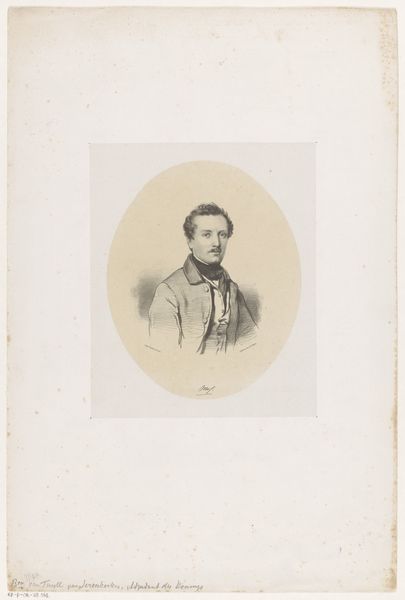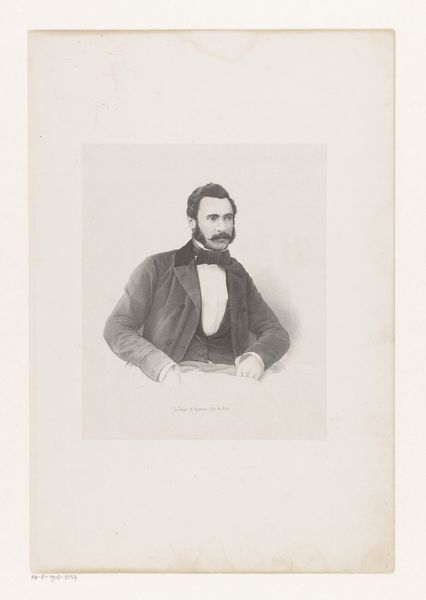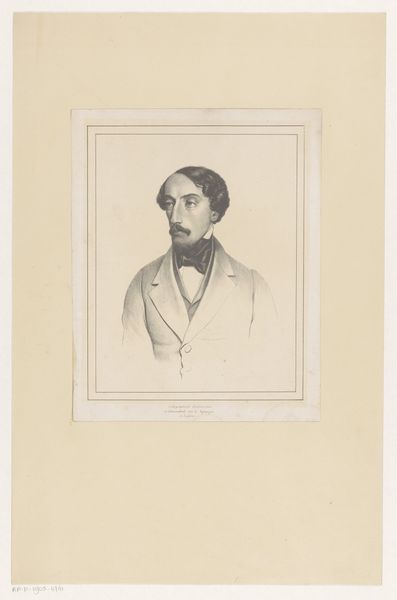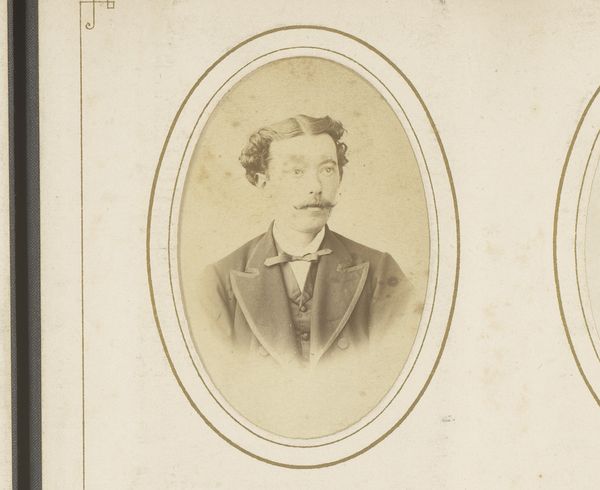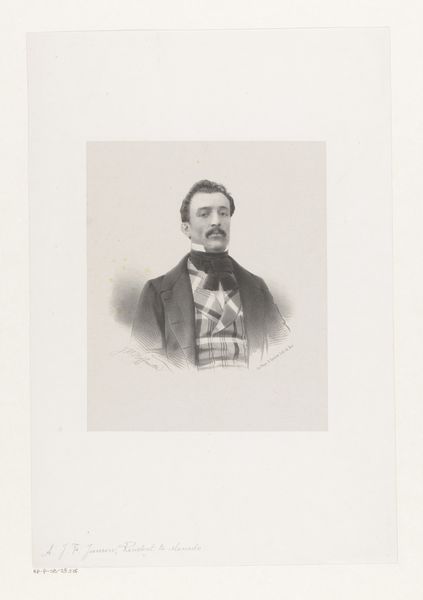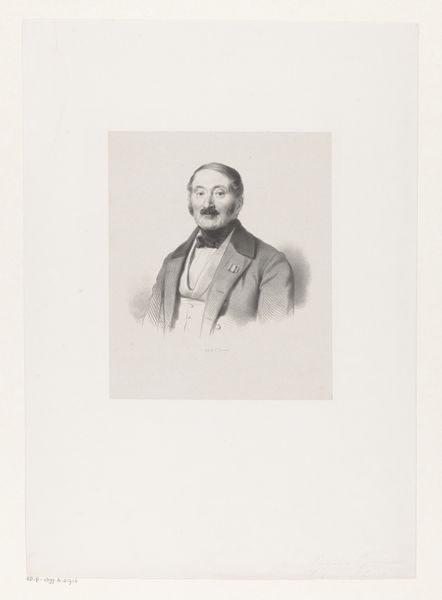
drawing, print, pencil
#
drawing
# print
#
pencil drawing
#
pencil
#
portrait drawing
#
realism
Dimensions: height 485 mm, width 367 mm
Copyright: Rijks Museum: Open Domain
Curator: Well, here we are standing before what appears to be a quite elegant drawing—a certain "Portret van Frederik van de Poll," crafted by the talented Johan Hendrik Hoffmeister. I imagine it took a good while to finish! Editor: My first thought? There's a certain melancholy in those eyes. And I love how the softness of the pencil suggests a quiet introspection, wouldn’t you agree? Almost romantic, in a minor key. Curator: Melancholy, perhaps... I see a man of a certain status. You know, the artwork seems to straddle a fine line—its approximate date places it near the mid-19th century. There's something wonderfully tangible in Hoffmeister's lines; one can practically feel the fabric of his jacket, the sweep of his hair. And his piercing gaze…quite engaging. Editor: It’s interesting to situate this within the 19th-century rise of the bourgeoisie and the desire for visibility. How was identity being constructed and circulated then? Look at the attention given to his mustache, a powerful signifier! It makes me wonder about the performance of masculinity at the time. Curator: It is tempting to psychoanalyze. One must, of course, acknowledge how portraits were often tools of social climbing back then, maybe even now! A declaration of "I exist, I matter." Though in Hoffmeister's capable hands, it’s much more delicate and evocative than that, don't you think? Almost shy in its self-awareness, and certainly not imposing at all. Editor: Definitely. There is a delicate balance of power and vulnerability being negotiated here. It reminds me, oddly enough, of some contemporary discussions around male vulnerability. Is there a deliberate mirroring happening in the pose? Is there a discomfort subtly conveyed? Curator: Interesting thought, certainly. Perhaps we are, centuries later, only just beginning to unravel this visual text. The subject becomes newly relevant in our own explorations. Editor: Agreed. And it’s through that layered examination of both art history and the social frameworks within which an image is created and consumed that we reveal so much more than just pigment on a canvas. Curator: Or lead on paper! I like to think the process brings new meaning both ways, informing who we were as well as who we are now.
Comments
No comments
Be the first to comment and join the conversation on the ultimate creative platform.
